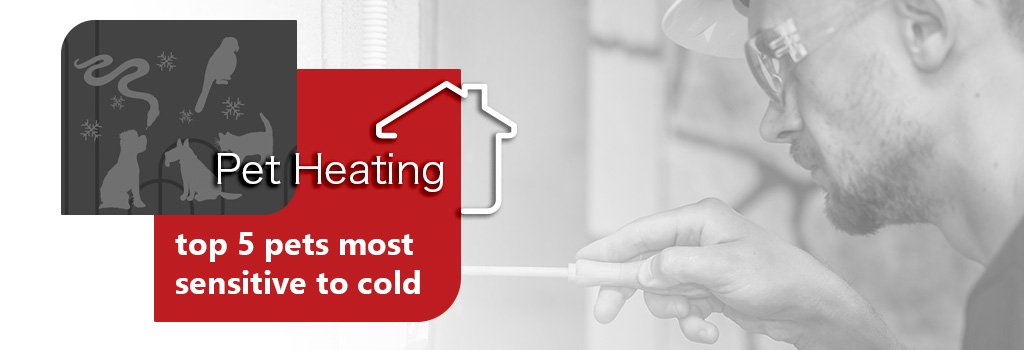Winter Pet Heating
As winter approaches, it’s crucial to remember that our pets may not be able to say they’re cold, but they certainly show it. Just like humans, different pets have varying levels of tolerance to cold weather. Some are naturally equipped to handle colder climates, while others may require additional warmth to stay comfortable and healthy. This guide explores the top 5 pets most sensitive to cold, their signs of discomfort, and how you can provide them with pet heating solutions during the winter months.
Top 5 Pets Most Sensitive to Cold and Their Heating Needs
No.5: Elderly or Sick Pets
- Cold Sensitivity: Older animals and those with health conditions (like arthritis) have a reduced ability to regulate their body temperature. Cold weather can exacerbate joint pain and other health issues.
- Signs of Cold: Increased stiffness, difficulty moving, shivering, and reluctance to go outside.
- Pet Heating Products: Heated orthopedic beds, pet-safe heating pads, and regular gentle exercise indoors to keep joints moving can help alleviate discomfort. Warm clothing and maintaining a warm home environment are also beneficial.
No.4: Hairless and Short-haired Cats and Dogs
- Cold Sensitivity: Breeds such as Sphynx cats, Chihuahua, and Greyhounds have little to no fur and minimal body fat, making them more susceptible to cold. These animals can easily become chilled, especially during the winter months.
- Signs of Cold: Shivering, seeking warm spots, reduced activity, and curling up tightly to conserve heat.
- Pet Heating Products: Warm clothing like sweaters, heated pet beds, and blankets are ideal for these pets. Additionally, keeping them indoors during cold weather and providing a warm sleeping area can help prevent them from getting too cold.
No.3: Small Mammals
- Cold Sensitivity: Small mammals like guinea pigs, hamsters, and ferrets are particularly vulnerable to cold due to their small size and fast metabolism. They can quickly lose body heat and are prone to hypothermia.
- Signs of Cold: Curling up tightly in a ball, reduced activity, and cold extremities (ears, tail, paws).
- Pet Heating Products: Use of heated pads or beds designed for small mammals, fleece-lined habitats, and providing nesting materials like straw or soft blankets can help them stay warm. Ensuring their cages are placed in warm areas away from drafts is also essential.
No.2: Tropical Birds
- Cold Sensitivity: Birds such as parrots, cockatoos, and parakeets, especially those native to tropical climates, have a low tolerance for cold. Their thin skin and lack of insulating body fat make them highly susceptible to temperature drops. Cold can lead to respiratory issues and weakened immune systems.
- Signs of Cold: Fluffing up their feathers to trap warm air, shivering, lethargy, and huddling in one spot.
- Pet Heating Products: Providing heated perches, heat lamps specifically designed for birds, and ensuring their cages are placed away from drafts and cold windows can help keep them warm. Bird-safe heaters and insulated cage covers are also good options to maintain a comfortable temperature.
No.1: Reptiles
- Cold Sensitivity: Reptiles, such as snakes, lizards, and turtles, are cold-blooded animals and depend entirely on external heat sources to regulate their body temperature. In cold environments, reptiles can become lethargic and may stop eating. Their metabolism slows down significantly, and without proper heat, they can suffer from digestive issues and even hypothermia.
- Signs of Cold: Reduced activity, refusal to eat, darkened skin color, and hiding in warmer areas of their enclosure.
- Pet Heating Products: For reptiles, it’s crucial to provide a consistent heat source like heat lamps, heating pads, or ceramic heat emitters that mimic their natural warm environments. These pet heating products should be installed in their enclosures to maintain a proper temperature gradient that allows them to thermoregulate effectively.

Do animals feel cold in winter? Absolutely. It’s vital to recognize the signs of discomfort in our pets and provide the right heating products to keep them warm. Some pets are more sensitive to cold than others and need extra help during the winter months. Using pet heating solutions like heated beds, pads, and clothing can ensure your pets stay comfortable and safe, enhancing their quality of life and preventing cold-related health issues.

